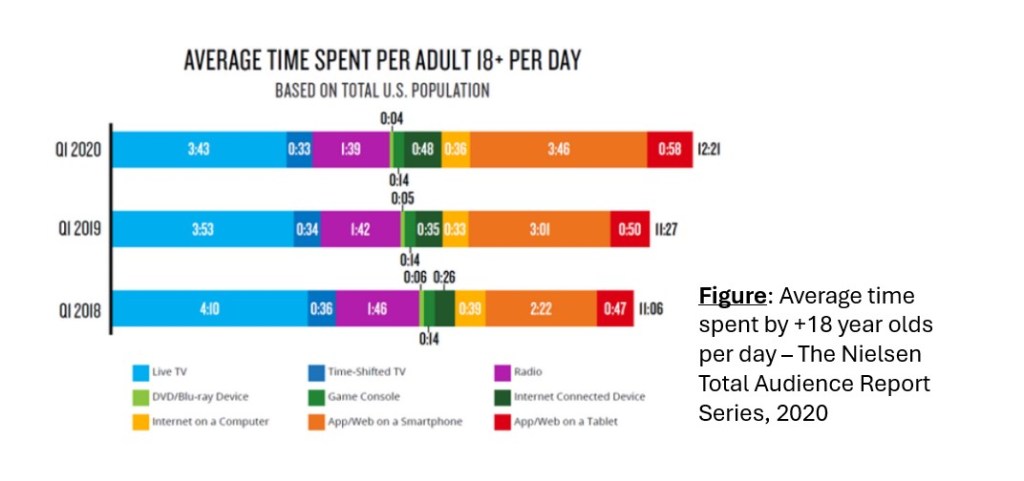Link between cyber addiction, eating disorders and obesity
Source : Nutriactis/Rouen-Normandie hospital

Cyber addiction is a disorder that includes, among other things, addiction to various screens (smartphones, televisions, tablets, game consoles), the Internet and social networks. With an average exposure of more than 12 hours a day in 2020, the use of screens and social networks is on the rise worldwide, and can have harmful effects on health.

- Screens, through the broadcasting of advertisements promoting rich, low-nutrient food products, can steer consumers towards hedonic food choices and thus encourage the onset of compulsive eating disorders and obesity. What’s more, excessive screen use is generally associated with a sedentary lifestyle (see Physical Activity section) and snacking (see Food section), which can contribute to weight gain and poor eating habits.
- Also, the use of screens during meals diverts our attention (sound and visual stimuli) away from food intake. This delays satiety and increases food intake by an average of 25%.
Hedonic nutrition: nutrition that brings pleasure to the consumer

Finally, the use of screens at the end of the day has a direct impact on sleep through the diffusion of blue light and the excitement generated, disrupting biological rhythms and sleep onset. Poor sleep (quantity and quality) encourages fatigue, snacking and, consequently, the onset of TCA or obesity.
- In addition to increasing exposure to screens, the use of social networks is on the rise worldwide. Between 2008 and 2015, the average time devoted to the Internet by 18-24 year-olds went from 15 minutes to 2h48m.
- This craze can be explained by the fact that social networks such as Instagram or Tik Tok, enable constant interaction with the world and offer visual access to multiple content (photos, videos) on demand. However, this content, which is frequently based on appearance, tend to convey the idea that body image has a major influence on interpersonal relationships. Body image then becomes the main preoccupation and opens the field of possibilities for achieving the perfect appearance and thus collective validation.
- Through a mechanism of social comparison, social networks encourage the internalization of an ideal of thinness, which can lead to body dissatisfaction, food restriction and eating disorders (see Body preoccupations fact sheet). Indeed, one study revealed that viewing attractive photos of celebrities or peers had a negative effect on women’s mood and body image. What’s more, a strong association was confirmed between the use of social networks and an increase in eating preoccupations (of the order of 2.5 times). Thus, social networks, through their increase in dissatisfaction and body preoccupation, represent real risk factors for EDs and obesity.
- Social networks are particularly popular with teenagers and young adults; it makes sense to use them for prevention. It is essential to communicate the need to take a step back and the importance of reducing screen time. It is therefore particularly important to integrate the prevention of cyber addiction and its associated risks into the management of EDs and obesity.